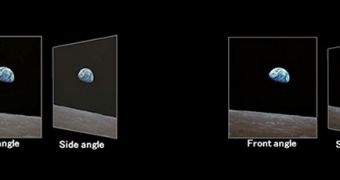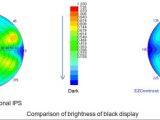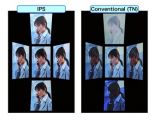IPS displays are well known for their very wide viewing angles, but they still have shortcomings, most notably in the way of image contrast and color quality. It is the only reason why they haven't replaced TN screens completely.
This has now changed. Leading supplier of small and medium-sized screens from Japan, Japan Display, has finally completed development of the IPS-NEO technology.
These screens lose absolutely no image quality when seen from an angle, all thanks to the new manufacturing method which also decreases the chance of a screen coming out faulty from the factory.
During normal liquid crystal display manufacturing, an orientation process needs to be used, to alight liquid crystal molecules in the same direction.
A process known as the rubbing method is the common technique. An orientation membrane is rubbed in a fixed direction with a rubbing roller. It's oddly reminiscent of flattening dough with a rolling pin really.
Unfortunately, the rubbing method can't account for the unevenness of the circuit pattern formed on the glass substrate, which means that proper orientation can suffer. Foreign particles may sneak in as well, further affecting production yield.
Japan Display, however, has now begun to use a new method, called photo alignment, which eliminates, or at least greatly reduces, both of the problems mentioned above.
Due to these advantages, IPS-NEO screens will be made with transmissive liquid crystal that is normally hard to mass produce, but can reduce power consumption (transmissivity rises by 10%). Coupled with the Japan Display sixth-generation (1500 x 1850 mm / 59 x 73 inch glass substrate) low temperature poly-silicon (LTPS), mass production of IPS-NEO is enjoying low production failure risks in addition to image quality.
It will be interesting to see how things proceed in the future. Since JDI is making small- and medium-sized displays, the IPS-NEO will probably start to take over the tablet and notebook markets first. After that, monitors and all-in-one PCs will start to adopt the technology as well.
However, it is quite ironic that the display technology boasting the best quality retention when seen at an angle is out of reach for the products that would benefit the most from the breakthrough: large-size television sets.
After all, you're likely to always sit right in front of you monitor or laptop screen, but TVs, especially large ones, are made for group activities, where there is a high chance of someone having to watch it from the side of the room, or an armchair positioned away from the exact front of the screen. Alas, no time frame was given for large format IPS-NEO applications.

 14 DAY TRIAL //
14 DAY TRIAL // 

